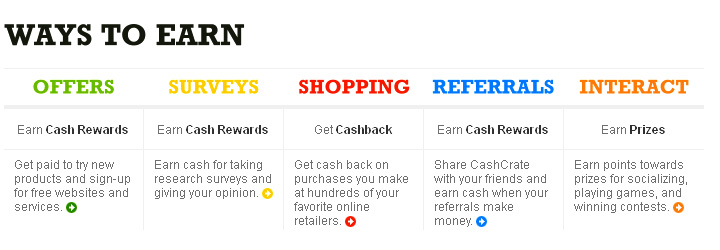
You have decided to build your own digital marketing strategy. What's next? Well, this article will walk you through the various steps of the process, from choosing your channel to researching your audience. This article will also help you to create a customer path and split test a strategy. Once you have this information, your brand will know if it is working. You're not the only one who isn't satisfied with your new strategy. There are many other businesses asking the same questions: "How do you start a digital advertising strategy?"
Researching your audience
In creating a digital marketing strategy, research your audience to better understand their needs. This can be done through quantitative research. This involves surveying large populations and producing statistical results. If you are looking to create an email campaign that targets a particular audience, for example, you will need to identify their pain points and interests. You can also review their purchase history to determine if they have changed their purchasing habits. You can then target your marketing message to specific audience segments.
It is essential to fully understand your audience in order to develop a successful strategy for digital marketing. You will not be able understand their wants and needs if you don't conduct research. Research is a great way to find those issues and then create content that's relevant for them. By doing research, you'll also be able to predict their needs and become more effective in your marketing. Here are some suggestions for researching your audience.
Interviews: Conducting surveys can help you understand your audience better. You can ask existing customers via email, publish customer reviews on social media, and conduct interviews. These surveys can give you valuable insight into your audience's motivations. Then, you can create your digital marketing strategy accordingly. While it's essential to research your audience, it's equally important to create compelling campaigns. You'll be able engage your audience and increase your sales.
Segmentation: You can tailor your message to your audience by understanding their preferences, interests, lifestyle. Segmentation will allow you to craft a stronger message and interact with your customers in a more personal way. Adidas, for example, sent a gender-specific email to its customers, while the clothing company categorised its audience by gender. Customers tend to buy jeans, and so a survey asking them for their opinions on the retailer would return an average score 8/10.
Choosing channels
The key to promoting your product/service is choosing the right digital marketing channels. Your primary objectives, target audience and budget should all play a role in your decision. Different channels produce different results. Choose wisely and choose what is best for your needs. Your choice of channels will impact the type of content that you share and how you format your ads. While content marketing is still the most effective form of marketing and will continue to be relevant, you should make use of these channels if you want your audience to see it.

The goals of your business will influence the choice of which digital marketing channel to use. You should determine your long-term as well as short-term goals. A long-term goal could be to increase revenue by 20% over the next two years, while a short-term goal might be to generate 400 sales qualified leads within six months or increase website traffic by 70% in eight months. It is crucial to understand your short-term, long-term and ultimate goals so you can choose the right channels for you.
Analyze the effectiveness of every channel before you make a decision about which one to use. Each channel has unique strengths and weaknesses. Consider the cost of each channel's creative content and what type you will need. Make sure to use all your available budget before you start using new channels for your digital marketing strategy. If you want to create a buzz-generating campaign, you should use Facebook or Twitter.
Designing a customer journey
A customer journey plan is one of the key elements to a successful digital marketing campaign. These maps outline the customer's journey from decision to action. The customer journey maps can be used to show customers the entire customer journey, from the first stage of a sales funnel to when they become loyal customers. The customer journey map can also help identify where improvements can be made.
In a nutshell, a customer journey map represents a prospect's journey toward purchase. It helps marketers map out the questions they ask and the pain points they experience along the way. The higher-funnel stages are aimed at creating awareness and interest, while the final stages are devoted to fostering brand loyalty. This process should begin with awareness, which can occur through social media, word of mouth, search engine suggestions, blogs, SMS, and apps.
After researching and learning about a brand, potential customers begin the information-gathering phase of the customer journey. Initially, they don't know who you are, but they know what they want. In this phase of the Customer Journey, the brand should have content that helps customers make an informed decision. To help customers overcome any remaining obstacles during the purchasing process, brands may offer a free trial period.
Marketers can use a customer journey map to help them target advertising by understanding how customers buy products and services. Each stage in the customer journey needs to have its own buyer persona. Marketers can adjust their marketing campaigns by identifying each stage's goals. Marketers can also create a customer journeymap to better understand the customers they are targeting by mapping out what motivates them at each stage of their decision-making process.
Split testing your strategy
Split testing in various areas of your digital strategy can make your business more profitable. These areas include page copy, headlines, buttons text, images and social sharing buttons. Email marketing is also a good option. Below are some scenarios that you could test. Split testing allows you to identify which marketing tactics are most effective in increasing sales and profitability. Make sure to use the correct sample size. Split testing should not be done less than once a month and should have a high confidence rating.
Split testing allows you to find out if certain marketing strategies are effective or not. You can also make changes to improve their effectiveness. Split testing can also help you determine if your online marketing strategy is producing leads and generating returns. Split testing involves experimenting with different versions of a website, or individual elements of it. Split testing can help you determine whether your website is profitable. Once you have determined which variations are generating more leads, you can make changes to your digital marketing strategy.

ClickFunnels offers a library that allows you 6 different versions to test one advertisement. It can help you get ideas for split testing. Another good place to get ideas for split tests is on Facebook. Facebook offers many examples of Facebook ads. You can also copy these to see which ones work best. Split testing is also possible on landing pages. For example, moving your CTA below the fold increased conversions by 304%, while removing it from the landing page caused cart abandonment rates to decrease by 33%.
Split testing is an important part of conversion optimization. It involves dividing traffic into two groups - the control group and the variant. Split testing lets you show half the variant version to 50% of your traffic. Splitting traffic into equal segments is used to show the variant version to each segment in a multivariate experiment. Split testing can be a powerful tool in digital marketing. The results will amaze you!
Measuring its success
One of the first steps in establishing a successful digital marketing strategy is to measure its results. This can be accomplished in many ways. The number of pages viewed can be another indicator of the campaign's effectiveness. These metrics can help you determine the success or failure of a campaign depending on your target audience and to evaluate the effectiveness of an individual marketing initiative.
To measure the success and effectiveness of your digital marketing strategies, you need to track certain key performance indicators (KPIs). KPIs are quantifiable metrics used to track the performance of your marketing team against a set goal. These targets may be high-level, or low-level. These KPIs can be useful in identifying success of a campaign. They provide a level of accuracy that can serve as a guide for future campaigns.
It is important to set clear objectives for measuring the success of your digital marketing strategy. What number of visitors did your website receive? What content did your website encourage? Are your email campaigns generating sales? Are you getting new business? What percentage of visitors purchased after they read an email? These are just a few examples of what you need to track to determine whether your digital marketing strategy is working. It all depends on your objectives and goals as well as your digital marketing strategy.
FAQ
What is Onpage SEO?
On-page seo refers the actions that you take on your website to increase its rank in search engines. On-page optimization includes site architecture, page titles and meta tags. Image alt text is also included. Off-page optimization refers to any activities outside of your website that can improve its ranking. These include social media shares, press release, backlinks, and other activities that can improve your website's ranking.
How much does SEO cost?
SEO costs depend on the size and industry of your business, as well as your budget. While smaller companies might only need to spend a few hundred dollars a month, larger companies can expect to spend thousands a month. Use our SEO calculator for a free estimate.
SEO: Is link building still relevant?
Link building will always remain essential. But how you approach it today is different than how others did it 10 or 20 years ago. The biggest challenge for any business today is how they find customers and make sales. Search engine optimization is where you come in.
Social media is essential for business today. Also, content marketing strategies are crucial. Google penalizes websites with too much backlinks, so link building seems less effective. This makes sense because if you're linking to many other sites, there's probably nothing original on yours worth looking at.
These factors show that link building has lost its value in ranking your site.
Statistics
- Deleting those 10k pages is one of the main reasons that he improved his site's organic traffic by nearly 90%: (backlinko.com)
- If two people in 10 clicks go to your site as a result, that is a 20% CTR. (semrush.com)
- And 90%+ of these backlinks cite a specific stat from my post: (backlinko.com)
- A 62.60% organic traffic boost to that page: (backlinko.com)
- Sean isn't alone… Blogger James Pearson recently axed hundreds of blog posts from his site… and his organic traffic increased by 30%: (backlinko.com)
External Links
How To
How do I know if I am doing good SEO?
There are many ways to tell if you're doing good SEO.
-
Your bounce rate should never exceed 30%. This means that users will abandon your page without clicking any other link. A high bounce rate indicates that your audience doesn't trust your brand or isn't interested in what you're selling.
-
Visitors will visit different pages on your site. This is a sign that they are engaging with your site.
-
Your conversion rate is improving - your audience has become aware of your product or service and wants to buy it.
-
Your site's average time is increasing. This means that people spend more time looking at your content.
-
This is a good sign that you are doing great SEO.
-
You get more shares on Social Media - this indicates that your content has been shared by others and reaching audiences beyond your following.
-
You are getting more comments in forums - this means that people respond positively about your work.
-
You get more engagement on your website, with more likes, tweets and shares.
-
Your rank in SERPs keeps increasing, a sign your hard work is paying off.
-
You're receiving more leads from your website - this shows that people have found your website organically and are now contacting you.
-
Your sales are rising - this is a sign that people who found your website while searching for your services and products are buying them.
-
Your blog post receives more views/comments which indicates that people find your content informative and useful.
-
More people subscribe to your email newsletter means you have earned their trust enough to allow them to receive updates on your business.
-
Sales are rising. This is a sign that people like your products so much they are willing and able to pay for them.
-
Your social media followers are higher, which indicates that your fans are more likely to share your content or engage with you.
-
This indicates that journalists are discussing your brand online and you're receiving more PR mentions. This can increase your company's visibility and your reputation.
-
You are being recommended more often, which means that other companies recommend your brand.
-
People keep returning to your website - this shows your customers are happy with your work and will come back again the next time they need your help.
-
Your competitors are losing ground - this shows that they didn't invest as much money in their SEO campaigns as you, making them look bad.
-
Your brand image is changing. This indicates that your brand popularity is growing among a new customer base.